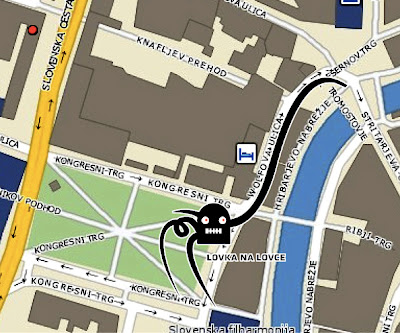Rachel Mawdsley is a photographer who specializes in portraiture. Her work centers around things that make us human, with themes such as mortality and transition. Ms. Mawdsley has graciously agreed to share a conversation about her project, The Meaning of Life.
Here is her statement for the project:
In October 2009, I lost my beloved Grandad, and favourite photographic subject, suddenly. It changed everything, and left me feeling lower than I had ever thought possible. I found myself occupied constantly with questions about my own existence. When I needed a subject for a university project, 'The Meaning of Life' seemed perfect. Cue rolling eyes and sympathetic smiles from my peers. What I didn't want to create, was a pretentious student project that sought the 'answer' (this is what people expected of me!). All I wanted was opinions. I wondered if anyone else had thought about the big question as much as me.
The project is ongoing, and will eventually form a book. I started, for the sake of my college project, with people who work in the life and death cycle because I was intrigued by how a job could affect beliefs.
Pat McNally: The ‘meaning of life’ as a theme for a photography project could easily degenerate into platitudes, or cynicism if sought out in an absolute way. However, your approach, is very personal and varied. It seems that while the concept of an absolute ‘meaning of life’ could be a bit trite, seeing what others put out as their meaning, is very fresh and interesting. Asking the question of death and birth specialists, adds a wonderful angle to the question as well. I know that as an undertaker, my contact with death results in a great deal of time pondering these issues. You mention that you were curious about whether that kind of work would affect their beliefs- what is your opinion about that at this point?
Rachel Mawdsley: The people that I met for the project were very appreciative of life regardless of any religious beliefs that they held. A few explained that dealing with death daily in such a ‘matter of fact’ way had made them realize that their own time was limited and they needed to make the most of it. Many mentioned the emotion involved in dealing with sudden deaths from suicide or drugs, and of the impact on the families involved. It is clear that this could make you appreciate your own life. All of my subjects were complete strangers who I met through an internet search for local businesses, or through people that I knew. I found that they were so accommodating, and interested in what I was doing. Cremating bodies, for example, isn’t exactly what you can chat about with your friends at the pub in an evening, and it was almost like these people genuinely enjoyed being able to share what they do with me.
PM: There is something very personal about pairing a portrait with the answer to a question that most of us wouldn’t often ask a stranger, or perhaps even a friend. Even when they answer with a cliché, it’s interesting because they are personally putting it out and owning it. We look at them and see a bit of their motivation, or agenda at the same time. Did you feel uncomfortable at all in performing these interviews and portraits?
RM: Not really, but I do tend to have this ridiculous attitude of arranging situations for myself, and then panicking when reality strikes.
It is interesting because I have always considered myself to be quite a shy person. Photography changed that for me because my camera gives me an excuse to meet people that I wouldn’t normally get the chance to, whilst also giving me something to hide behind. In the case of this project, the portrait session was usually the first time I had met most of these people, and so any discomfort was mainly down to the nerves over what to expect. My usual portrait shoots are over long periods of time, and I like to get to know people, so I was out of my comfort zone in some cases. I just turned up with my camera at an arranged time and had to build a relationship that would produce something that did that person justice. I believe that each of us is important, and I like to give people a voice.
For some subjects I had ten minutes, for others I had a couple of hours. The crematorium technician was my favourite. I spent most of the morning with him ‘backstage’ at a cremation ceremony, having only expected a ten-minute shoot and quick interview session. It was terrifying initially, but also strangely therapeutic considering I had experienced the death of a close family member only five months previously. If he had asked me in advance, I think I would have declined, but being thrown in the deep-end was brilliant. I think death is scary because we try to be ignorant to what happens thinking it will help us, but if we actually face things full on, there is nothing to feed the fear.
As for as what the people were going to say, I am genuinely interested in people, so their responses were great regardless of their content- that’s the beauty of real people; sometimes you get something you absolutely expect, and other times you get something wonderful and unexpected.
PM: There is a temporal quality to this work, in that the answer a subject gives one day, may differ a lot next week, or next year. Along with their image, their thoughts seem trapped in that moment. How has your idea of the meaning of life changed throughout this project?
RM: Photography is like that though anyway, isn’t it? As an artistic medium it is a constant reminder of death. You record a moment, and that photograph is a constant reminder that you are not getting that moment back.
My thoughts are still the same about why we’re here- I’m not religious at all, although I was brought up as a Christian. I believe that it is not possible to know whether there is a point for us being here until we die.
I must admit that I did leave a couple of the interviews thinking “wouldn’t it be great if what that person said was true.”
PM: It’s my experience that most people don’t have the time or interest to ask or listen with interest to deep questions of others. Have any of these interviews led to unexpected places?
RM: Definitely. I certainly went into the portrait meetings with plenty of time spare to chat openly in case people wanted to talk to me as much as I wanted to talk to them. I knew realistically that busy people wouldn’t be able to give me much time, but I was surprised by those that did. Once you start talking about these things, you feel a genuine connection with someone, and you start to find out all sorts that you didn’t expect. Lynn, the midwife, was experiencing birth at work, and death at home, having recently nursed her father through his final days with cancer, and undergoing treatment for the disease herself. It was incredibly interesting to hear what she had to say. She was very spiritual about the whole thing.
PM: The beliefs we have about what happens to us when we die have a great effect on nearly all aspects of our living existence. Certainly a person’s idea of the meaning of life is a result of previous experience, but how do you see it affecting their choices and perceptions going forward?
RM: Well I suppose it raises the question as to whether your influences now are going to affect your future; your future after death. It also has an influence on how you deal with situations. One of the professionals that I interviewed did say to me that God had a plan, which unnerved me slightly because that is quite an easy way to give up- if there’s a grand plan then can we turn things around ourselves? Don’t things start to get dangerous if we surrender all and believe that things are out of our control? I suppose in other ways this could be therapeutic, just not for me.
PM: The loss of your Grandfather started this project in a way. Do you know, or can you guess about his thoughts on the meaning of life?
RM: I know because he told me. His theory was that life was just a game that had somehow gone wrong. I don’t know fully what he meant by that, but he was obsessed with sci-fi films, and new technology, and so I can imagine that had something to do with it. He was quite a character really, and not everything he said was serious. We played the Star Wars soundtrack at his funeral as a back-up plan because he had actually requested Always Look on the Bright Side of Life from Monty Python’s The Life of Brian, but certain family members felt it was inappropriate.
PM: Whether there is a universal meaning of life, or not, it is certainly an interesting experience to learn what others think. Has working on this project and on your thesis led you to any new perspectives?
RM: I have mainly become more interested in art as a way of understanding human experiences that we have no control over. As someone who suffers from depressive illness, and having recently experienced a sudden death of someone very close, I really felt that lack of control at the time. I needed a reason to live, and the project gave me that; mainly by identifying the fact that we are all in the same boat.
As for my own beliefs, I don’t believe it is possible to know why we are here. I am certainly not religious, and so not influenced in that sense. I would like to think that the meaning of life wasn’t something as disappointing as just to keep the human race going, but at the same time I find it hard to believe that there could be something else after this. Reverend Stonestreet of the United Religions Initiative, UK
 |
| Photographer Rachel Mawdsley |
To explore more of Rachel Mawdsley's thought provoking work, visit these pages:


























































